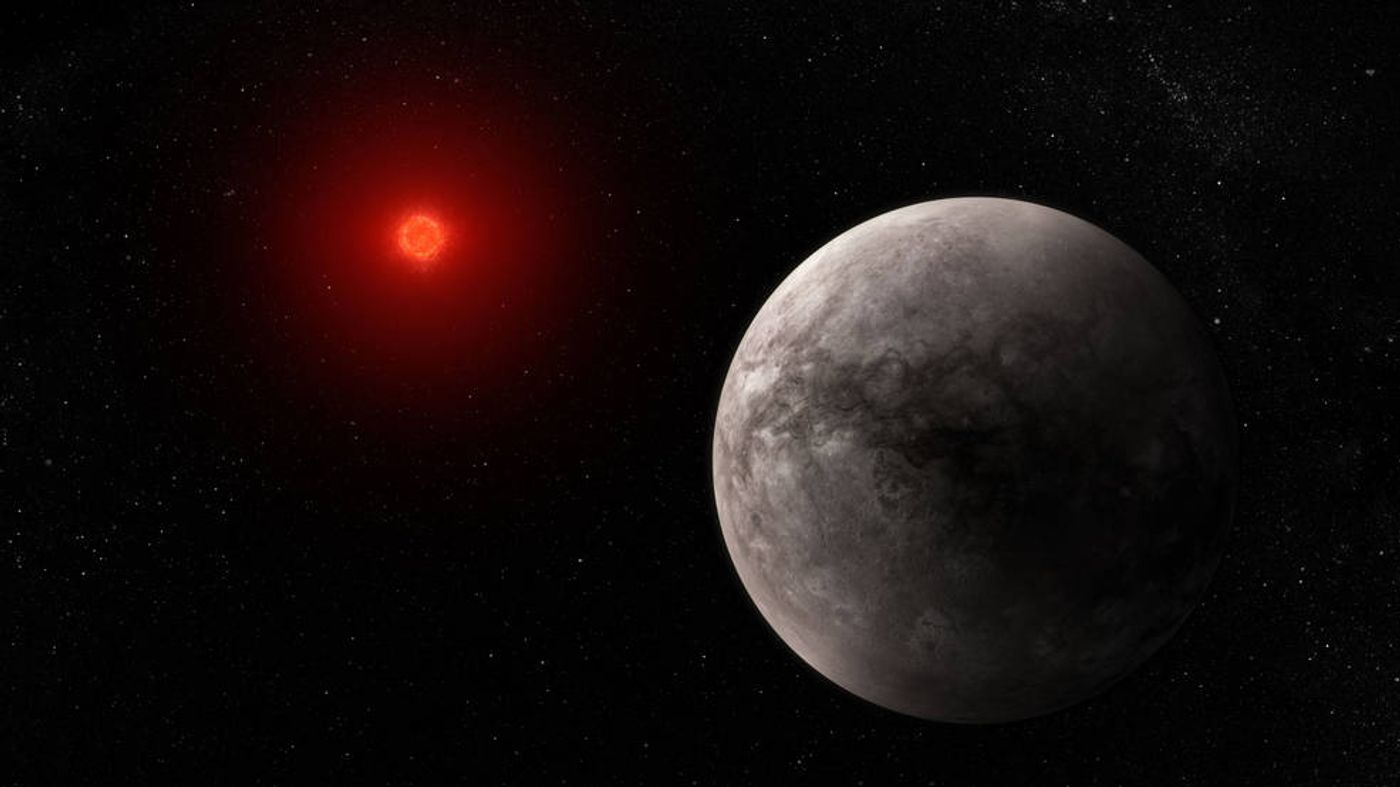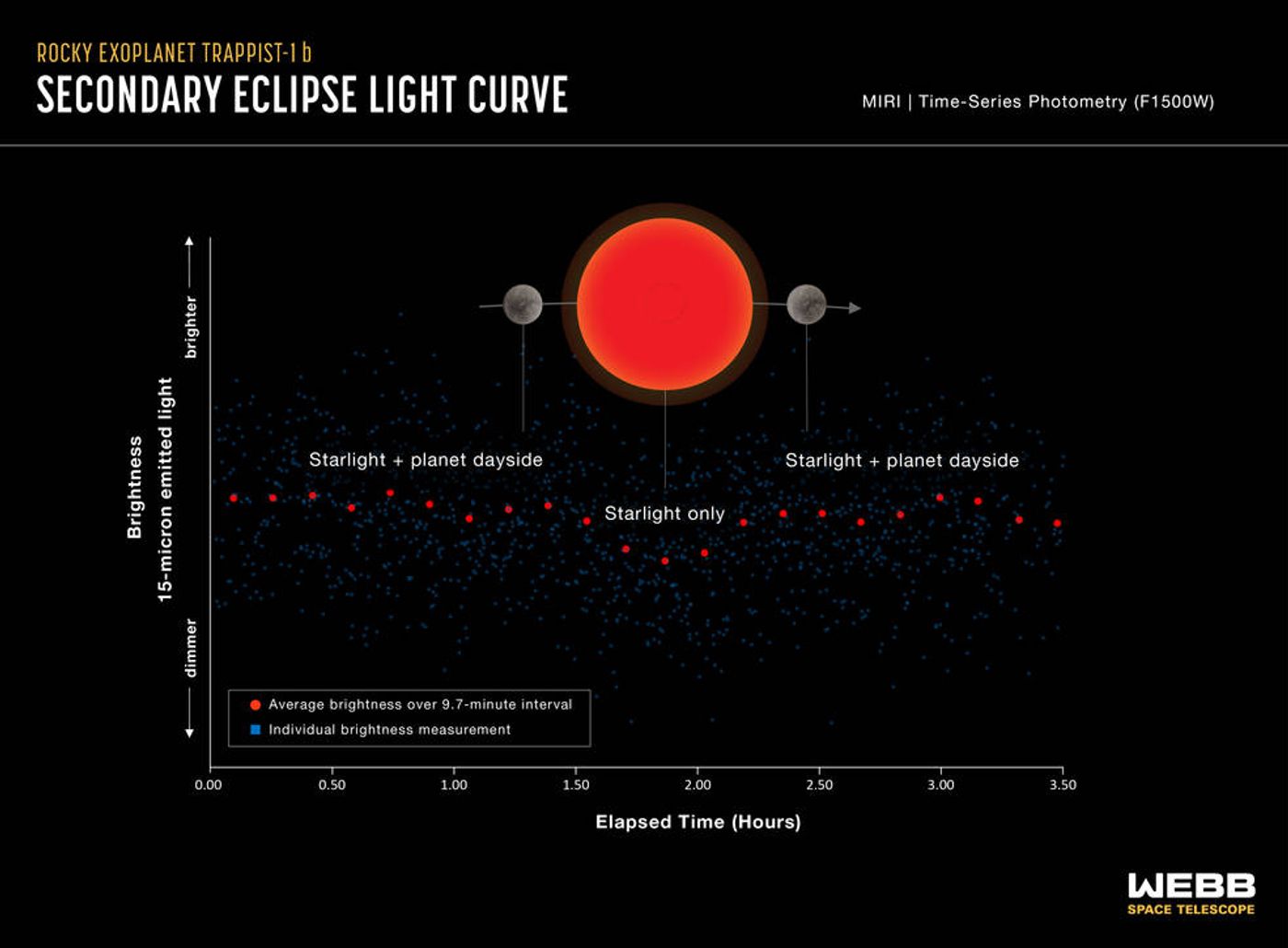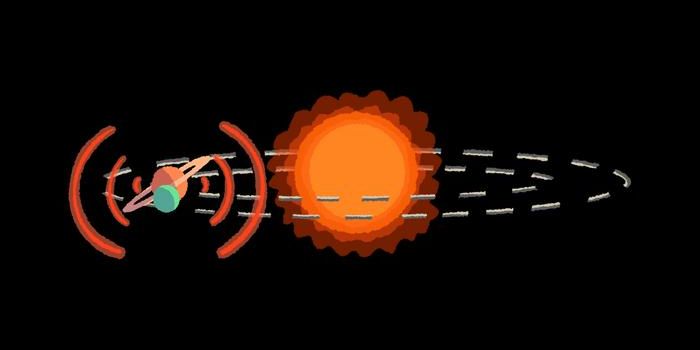TRAPPIST-1 Rocky Exoplanet Gets Temperature Reading from NASA's JWST
How hot are rocky exoplanets, and could they support life? This is what an international team of researchers hope to figure out as they used the Mid-Infrared Instrument (MIRI) onboard NASA’s James Webb Space Telescope (JWST) to take the temperature of TRAPPIST-1 b, which is a rocky exoplanet orbiting a red dwarf star (or M dwarf) located approximately 40 light-years from Earth. This study is the first of its kind to examine any form of light from a small rocky exoplanet, along with helping us better understand if these small worlds can hold atmospheres like the Earth.
Artist illustration of TRAPPIST-1 b. (Credit: NASA, ESA, CSA, J. Olmsted (STScI))
“These observations really take advantage of Webb’s mid-infrared capability,” said Dr. Thomas Greene, who is an astrophysicist at the NASA Ames Research Center and lead author on the study. “No previous telescopes have had the sensitivity to measure such dim mid-infrared light.”
For the study, the team used a technique called secondary eclipse photometry to measure the change in the exoplanet’s brightness as it orbits its parent star, specifically when it passes behind it. The study’s findings measured TRAPPIST-1 b’s dayside temperature at approximately 450 degrees Fahrenheit.
“This planet is tidally locked, with one side facing the star at all times and the other in permanent darkness,” said Dr. Pierre-Olivier Lagage, who is a senior astrophysicist at Commissariat à l’Energie Atomique et aux Energies Alternatives (CEA), and a co-author on the study. “If it has an atmosphere to circulate and redistribute the heat, the dayside will be cooler than if there is no atmosphere.”
Graphic of JWST temperature data comparing TRAPPIST-1 b to Earth. (Credit: Illustration: NASA, ESA, CSA, J. Olmsted (STScI); Science: Thomas Greene (NASA Ames), Taylor Bell (BAERI), Elsa Ducrot (CEA), Pierre-Olivier Lagage (CEA))
Light curve data of TRAPPIST-1 b from JWST showing brightness changes as it moves behind its parent star. (Credit: Illustration: NASA, ESA, CSA, J. Olmsted (STScI); Science: Thomas Greene (NASA Ames), Taylor Bell (BAERI), Elsa Ducrot (CEA), Pierre-Olivier Lagage (CEA))
TRAPPIST-1 b is the innermost planet in the TRAPPIST-1 system. It orbits approximately one hundredth the distance that Earth orbits our Sun and gets quadruple the energy. While TRAPPIST-1 b doesn’t orbit within the habitable zone (HZ) of its parent star, these observations still hold the potential to provide scientists valuable insights into the other worlds within the system, which boasts seven rocky exoplanets that were reported in 2017, along with exoplanets orbiting M-dwarf stars.
“There are ten times as many of these stars in the Milky Way as there are stars like the Sun, and they are twice as likely to have rocky planets as stars like the Sun,” said Dr. Greene. “But they are also very active – they are very bright when they’re young, and they give off flares and X-rays that can wipe out an atmosphere.”
TRAPPIST-1 b has been previously observed by both NASA’s Hubble Space Telescope and NASA’s Spitzer Space Telescope, and while they were unable to ascertain if the exoplanet possessed a puffy atmosphere, the data didn’t rule out TRAPPIST-1 b possessed a dense atmosphere. Measuring the exoplanet’s temperature is one method to help determine the atmospheric characteristics.
“We compared the results to computer models showing what the temperature should be in different scenarios,” said Dr. Elsa Ducrot, who is a Paris Region Fellowship Program Fellow at the French Alternative Energies and Atomic Energy Commission (CEA) in France, and a co-author on the study. “The results are almost perfectly consistent with a blackbody made of bare rock and no atmosphere to circulate the heat. We also didn’t see any signs of light being absorbed by carbon dioxide, which would be apparent in these measurements.”
What new discoveries will scientists make about TRAPPIST-1 b and other worlds orbiting M-dwarf stars in the coming years and decades? Only time will tell, and this is why we science!
As always, keep doing science & keep looking up!











